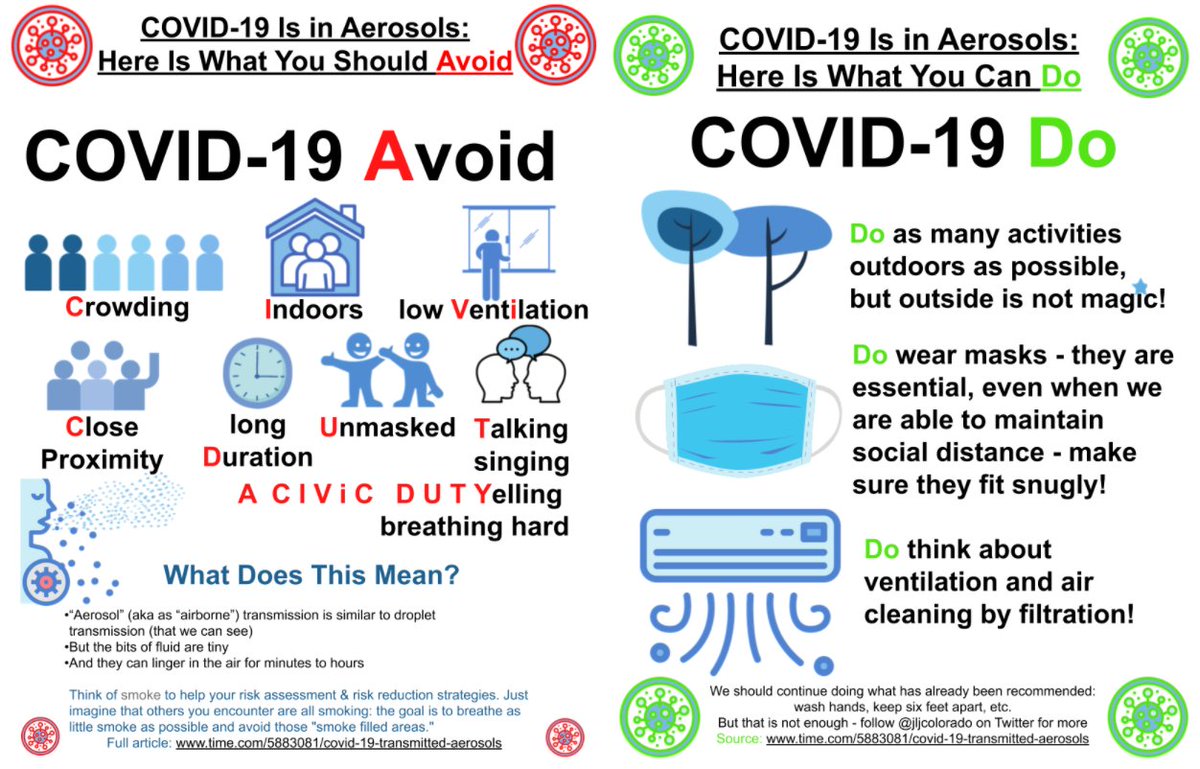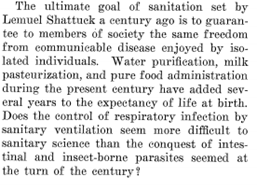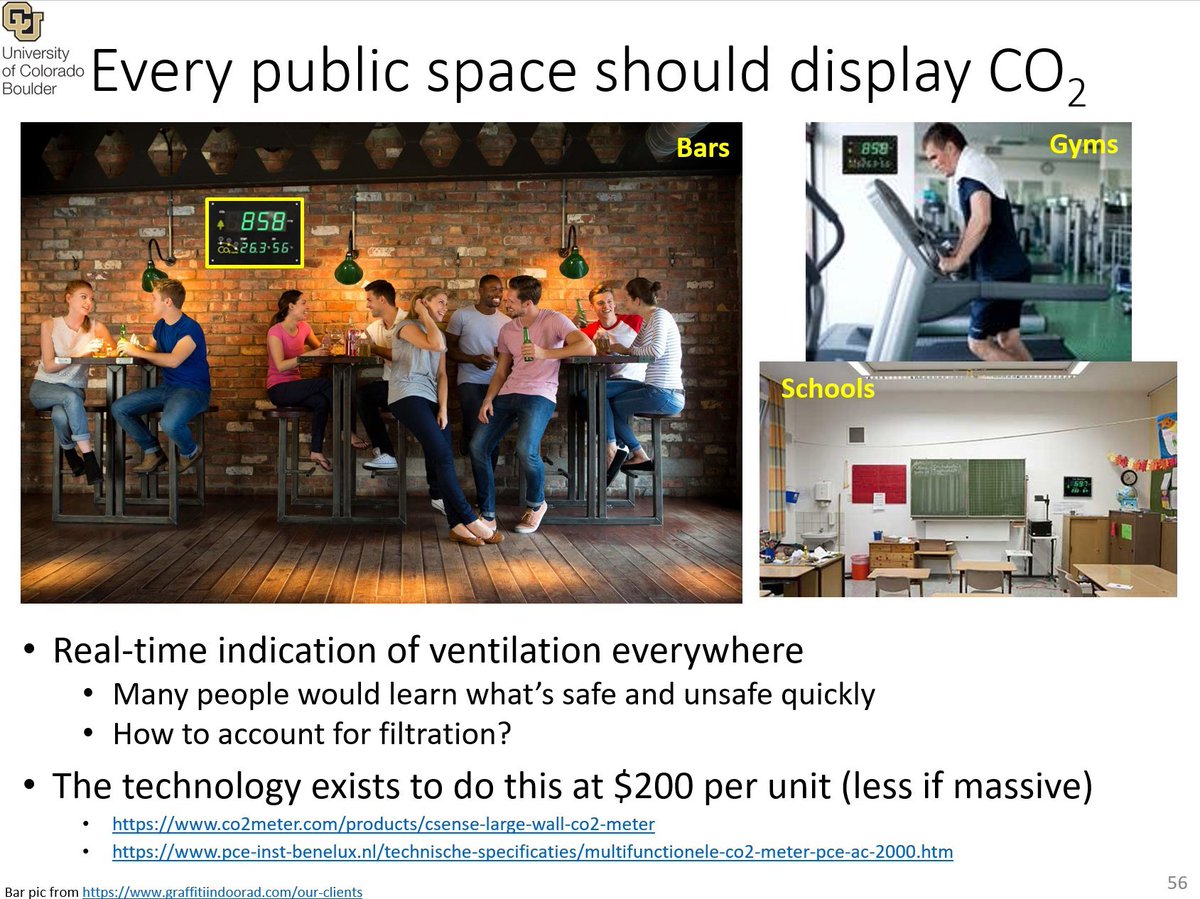
1/ A room, a bar and a class: how the coronavirus is spread through the air
An outstanding visual about how several "layers of protection" can make us much safer indoors
by @mariano_zafra & @javisalas via @elpaisinenglish
english.elpais.com/society/2020-1…
An outstanding visual about how several "layers of protection" can make us much safer indoors
by @mariano_zafra & @javisalas via @elpaisinenglish
english.elpais.com/society/2020-1…
2/ It makes totally clear that a mask is not a magic protection that makes us totally safe indoors. We also need to reduce crowding and duration indoors, need to ventilate (and to filter, if we can't ventilate enough), talk less and less loudly. Posters:
docs.google.com/presentation/d…
docs.google.com/presentation/d…

3/ Many more details, including answers to almost every question we get asked frequently, in our FAQs:
tinyurl.com/faqs-aerosol
Written by @linseymarr @ShellyMBoulder @kprather88 @ProfCharlesHaas @WBahnfleth @CorsIAQ @H_Herrmann24 @PollittKrystal Julian Tang, and myself
tinyurl.com/faqs-aerosol
Written by @linseymarr @ShellyMBoulder @kprather88 @ProfCharlesHaas @WBahnfleth @CorsIAQ @H_Herrmann24 @PollittKrystal Julian Tang, and myself
4/ The concept of "layers of protection"applies to aerosol transmission, but also applies to all the other measures to control the pandemic.
An excellent graphic of @MackayIM illustrating this:
(The layers of protection against aerosols are condensed)
An excellent graphic of @MackayIM illustrating this:
(The layers of protection against aerosols are condensed)
https://twitter.com/MackayIM/status/1319901144836026368
5/ Some of the most important things we can do are free:
- do everything we can outdoors
- Adjust your mask well, no gaps (see )
- Open the windows (and measure CO2 to know that you opened enough, but not be too cold or warm)
- do everything we can outdoors
- Adjust your mask well, no gaps (see )
- Open the windows (and measure CO2 to know that you opened enough, but not be too cold or warm)
6/ An of course keep your distance, which is also free.
Aerosol transmission is NOT only long-range, in fact most of it occurs at short distances if we e.g. talk in close proximity without masks
Aerosol transmission is NOT only long-range, in fact most of it occurs at short distances if we e.g. talk in close proximity without masks
7/ Why does social distance work? Because it keeps us away from the "smoke" (or from the "garlic breath") of others, as in this animation.
NOT because of the ballistic droplets, except when someone coughs or sneezes on your face
NOT because of the ballistic droplets, except when someone coughs or sneezes on your face
https://twitter.com/jljcolorado/status/1317928510980157440
8/ Now that we are finally overcoming error that aerosol transmission of diseases is very difficult, need to pay much more attention to "air hygiene"
Wells (1943) lamented that effort to remove pathogens from water and food was not being applied to the air. Finally 77 yrs later?
Wells (1943) lamented that effort to remove pathogens from water and food was not being applied to the air. Finally 77 yrs later?

9/ I suggest that every public establishment should have an easily viewable (NDIR) CO2 meter (examples below). This can be done now for $200, less if done massively.
Everyone would learn quickly which spaces need ventilation. Should guide who can re-open and not, or how many ppl
Everyone would learn quickly which spaces need ventilation. Should guide who can re-open and not, or how many ppl

10/ The @elpaisinenglish results are based on our COVID-19 Aerosol Transmission Estimator, which is freely available at tinyurl.com/covid-estimator
I helped @javisalas and @Mariano_Zafra with technical details. They were very patient with me and ensured everything was accurate
I helped @javisalas and @Mariano_Zafra with technical details. They were very patient with me and ensured everything was accurate
• • •
Missing some Tweet in this thread? You can try to
force a refresh






